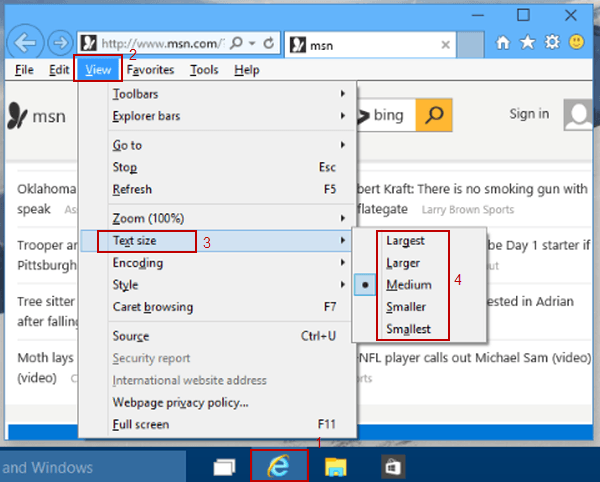

If you want to do so, click Settings, System, and then Display.

However, scaling down the resolution will make all parts of the UI larger, if less distinct. This should be avoided though, given the default resolution of your laptop screen or monitor is usually the best way to display Windows. The last option - and one that shouldn’t be used unless no alternative is available - is to change the display resolution. These can be adjusted up to size 24 font, making them about 2.5 times larger than the default. In the resulting window, you can set the text size when it comes to many user interface elements, including the title bar, menus, message boxes, palette titles, and tooltips.

In older versions of Windows, these settings are found in the Settings menu of the Display item in the Control Panel.įor greater control, click Advanced display settings at the bottom of the window, followed by Advanced sizing of text and other items. The default scale is 100 percent, but it can be set at 125, 150, 175, or 200 percent, essentially doubling the default size. This also lets you adjust scalable elements such as the taskbar and notification area. Underneath the primary display area is a slider that will allow you to change the size of all the text within the OS, including that in most third-party programs. To adjust the global text size settings for Windows, go to the main Settings menu - search for “Settings” in the Start menu, or click the notification panel, then all settings - and click System, then Display. If you have trouble reading or focusing on text or user interface elements in Windows due to poor eyesight, a small yet high-resolution display, or simply discomfort, it’s easy to adjust the size and appearance of text in Windows and most everyday programs. The steps below are written for Windows 10, but most of the options are readily available in older versions of the OS. That includes making the operating system easier on the eyes, and we’re not talking about the wallpaper. Greg Mombert/Digital TrendsWindows is incredibly flexible thanks to decades of Microsoft’s continuous development - just about anything you’d want to do with it, you can, if you know where to look.


 0 kommentar(er)
0 kommentar(er)
